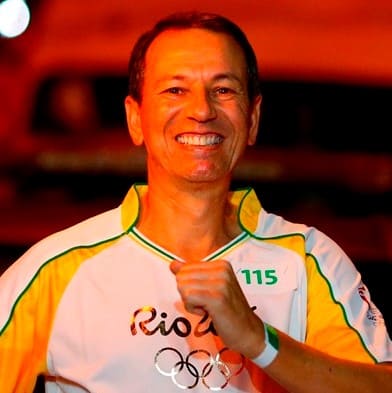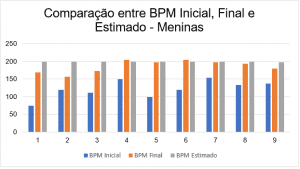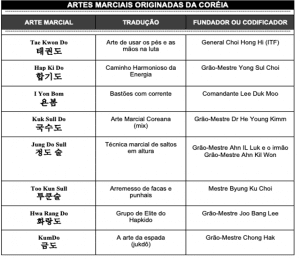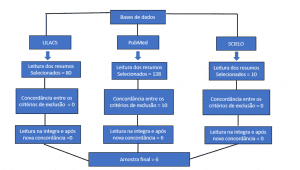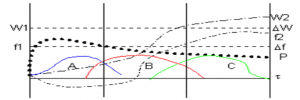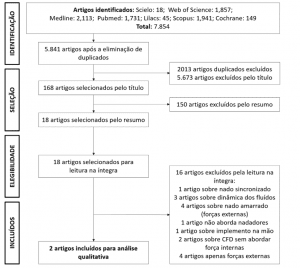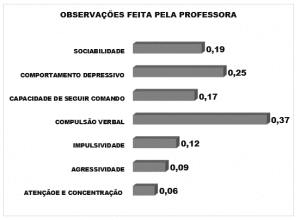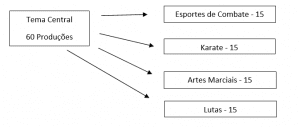ORIGINAL ARTICLE
BERTOLINO, Cláudio Luis [1]
BERTOLINO, Cláudio Luis. Athletic March: analysis of the supposed unnatural concept of the sport. Revista Científica Multidisciplinar Núcleo do Conhecimento. Year 05, Ed. 06, Vol. 07, pp. 49-60. June 2020. ISSN: 2448-0959, Access link: https://www.nucleodoconhecimento.com.br/education-physics-en/athletic-march-analysis
SUMMARY
The Athletic March, a race of athletics, of cyclical movement derived from the ordinary and highly technical march, part of the Olympic program since 1906, also played at the World Championships in Athletics and in exclusive World Cups, carries in addition to its own difficulties the inconvenient attribute of unnatural modality. This essay aimed at the comparative analysis of the main movement patterns of the marchers to the standards of two groups and four other events of athletics: endurance races, speed races, long jump, triple jump, dart throw and 110m hurdles; observed certain characteristics and consequences to the most requested body segments of the practitioner of each of them, resulting that certain aggressive mechanical requests produced by all the tests were verified and always greater than those observed in the Gait, from which one can conclude the impertinence of the supposed property attributed to it, or, that it would have a lower degree of unnaturalness in relation to all the evidence analyzed here.
Keywords: Athletic gait, athletics, biomechanics.
INTRODUCTION
Attributes for a given human, sports or functional movement, may be the most varied and dependent on the observer, based on their experiences and preferences. A simple walk performed by a mature individual in coordinating abilities can be seen as clumsy, unwrapped, or elegant at the other end.
Parallel to preferences, we have biomechanics in the regency of the analysis of cause and effect of movement; in time, also important disciplines such as anatomy, anthropometry, neurophysiology, physiology, biochemistry, psychology, physics, mathematics, among others, thus characterizing biomechanics as an area of interdisciplinary nature (Amadio and Serrão, 1999).
The Athletic March (figure 1) is a competition of athletics, of the oldest participants in the Olympic Games (Greece – Interim Olympic Games 1906) (Aquari, 2004) and athletics is considered king sport in the Games and basis for all others, because there, based on physics, its fundamental movements apply by adjustment and extension.
Figure 1 – Athletic Gait Technique

Despite the proximity to walking, the most natural of the movements, unnatural has been over time the worst assignment to the Athletic March, which has generated a distrust at every step of the athlete marcher, in the form of questions about orthopedic safety and maintenance of the race in the Olympic program, and thus, we have another case of dissemination of unfavorable information not proven , which reinforces the conception attributed to Goebbels: “A lie told a thousand times becomes true”.
It is difficult to know the origin, without scientific basis, of such a statement that still propagates, creates negative effects to the discipline and its practitioners, but that has already provoked some defensive reactions by coaches and athletes of the specialty (CADA, 2014).
The detractors of the March are close, commonly linked to athletics and far from neutrality; when sports leaders, creating obstacles of all sorts to their development, and even more so, at the moment when they do not allocate resources in an equal way to other events of the sport (Sampaio, 2016), as well as in the figure of coaches not connected with the sport, nevertheless, conjesuing about technical aspects and the nature of their movement.
In the good of truth there is the serious problem of control as to the rule that characterizes the March: uninterrupted contact with the ground (IAAF, 2016), the main aspect that differentiates it from the race, but problems with arbitration are also present in the most popular of sports in almost the whole world, as well as in many other modalities, and all of them, including the march , go through the continuous evolutionary process of the issue.
Where the Athletic March has developed and been established so far, and from where the stigma of unnatural movement was created for it; athletics, will also be in this essay, the provider of the objects of the analyses, the source to establish competitions in order to evaluate the origin of the attribute, by a debate based on that can definitively characterize the Athletic March only in what it is: Olympic sports modality, characteristics and own rules, without margins to move it alone to the unnatural field of sports movements, which constitutes the objective of this study , by comparative analysis of the main movement patterns of the marchers to the patterns of two groups and four other athletics events, observing characteristics and consequences to the most requested body segments of the practitioner of each of them.
METHODS
The sample consisted of 02 groups of athletics events: endurance races and speed races, plus 04 athletics events: long jump, triple jump, dart throw and 110m with barriers, and the comparison between gait and sampling events occurred in the main body segments involved in all of them, by observing the technical patterns of movements , adopted internationally (Atleticastudi, 1984; FIDAL, s.d.) to contemplate high yield.
The following quantities were also analyzed: impact force, physiological adaptations and morphological alterations of athletes of these athletics events, comparing them to the same magnitudes of the gait test through the resulting modifications imposed by the systematized training process, which may reveal not only conclusions, but also foster other theories and interventions to establish supposed degrees of nature, or absence of it in the different athletic movements and other issues , remembering that the commitment of sport is to performance, or, the overcoming of limits.
RESULTS
IMPACT FORCE ANALYSIS
The ground reaction strength verified in the musculoskeletal system of the practitioner of the Athletic Gait at each step has an approximate value of 1.35 x body weight (PC), while the same value means 2.9 (Williams, 1985) and 3.5 x PC in endurance and speed races (Bruniera and Amadio, 1993) respectively.
At the extreme of the loads in the knee joint are the long jump tests, accusing 11.1 to 16.4 times the PC (Hay, 1993), and in the triple jump close to 22 x PC (Amadio, 1998). Tendons and other soft parts are thus subject to loads close to stress limits.
MOVEMENT ANALYSIS IN CERTAIN BODY REGIONS
Like the four athletics jumping events, the four events of the launch group also aim to overcome gravitational action and rely on implements now highly technological for its execution. In the test of the throwing of the dart (Figure 2), it was observed a high aggressiveness in the inner regions of the elbow, that there is no dart thrower that has not depart from its specific activities by chronic pain in it, and that the way requested is truly antiphysiological (Santos; Fernandes; Massada and Massada, 2014). In addition to the elbow, dart throwers are also variably affected by shoulder problems, while the marching athlete maintains an anteroposterior movement of the fletidos arms without overweight (figure 3).
Figure 2 – Dardist at the time of release
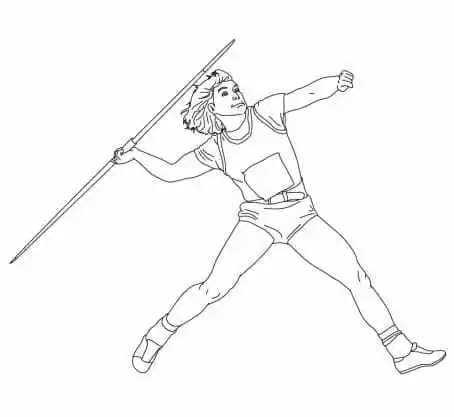
Figure 3 – Posture of the arms of the marcher
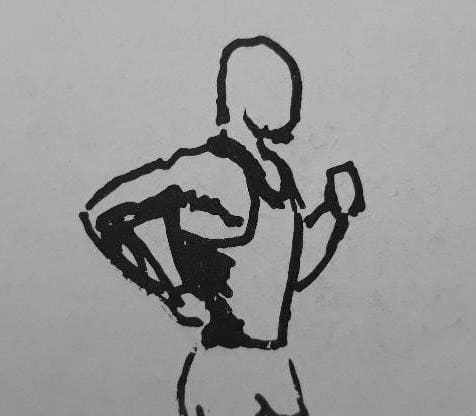
Source: Damilano (1984)
Undoubtedly, the region of the hips is the most noted in the movement of the Athletic March. The dynamics of the lateral-lateral axis of the athlete’s hip during gait describes a circular movement of 360º counterclockwise at its extremities, by the alternating sequence of the anterior and upper-inferior displacements of the same (figure 4). The displacement of this axis in the transverse plane ensures greater amplitude of the step by up to 25% (Deporte, 1987), and in the frontal plane, restricts the verticalization of the center of gravity of the athlete during the propulsion phase, between 01 and 04 centimeters.
The practitioners of the 110-meter hurdles races (figure 5) are among those who most require the coxofemoral joints, when they perform angles smaller than 45º between the thigh of the attack leg and the trunk, concomitantly with an abduction of the rebound leg that produces an angle of 90º between thigh and trunk, in the act of overcoming each of the 10 barriers in less than 0.5 seconds.
Figure 4 – Rotational action of the marcher’s hips
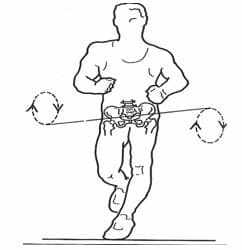
Figure 5 – Ranges of the barreirista’s hips
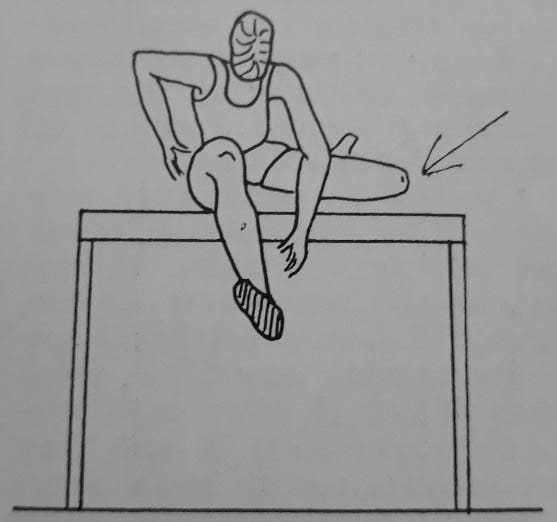
PHYSIOLOGICAL ADAPTATIONS AND MORPHOLOGICAL CHANGES
Coronary adaptations: thickening of the ventricular wall 15 to 20% (Maron and Pelliccia, 2006) and enlargement of the same cavity (Sharma, 2003) are important physiological phenomena that occur in explosion athletes, and in the fundists, denomination for the tests that encompass the Athletic march.
Many other non-apparent and temporary physiological adaptations are verified in both categories of athletes, but when it comes to morphological changes by increasing muscle mass, capable of generating strength and speed and also imposed by the training process, these are verified in the explosion athletes, which comprises the practitioners of speed races, throws and jumps, being such permanent modifications.
DISCUSSION
Athletics is the oldest form of organized sport. Its modern era took place in the early 19th century; it consists of 24 men’s and 23 women’s events, with divisions for races, jumps, throws, marches and combined, and for field, track and street (IAAF, 2016).
There are many tests and a huge variety of specific movements, yet only the movement of the Athletic March receives the derogatory distinction of unnatural, which by definition is contrary to the laws of nature, while the natural is produced by it, from where it is deduced that the more or greater the modifications for a given product, the lower the natural aspect in it.
This panorama continues to fix serious obstacles and risks to the present and future of the March; discredit to the questioning of its maintenance in the Olympic program. Side by side, the issue of arbitration, inherent to discipline, with recommendations from the IAAF Athletic March Committee (International Association of Athletics Federations) recently handed over to the IAAF Council in the search for resolution (IAAF, 2019), and the issue of “unnatural” pecha, addressed at the moment, in the search for a fair position for discipline in people’s minds.
It seems pertinent to classify the movement of the Athletic March as a specific coach, after changes towards performance, starting from the natural movement through the adapted natural (Sant, 1996). Such a condition can be verified in several athletics events, but it seems that few depart and remain with an motor gesture as or closer to the natural as the March.
Moreover, with its origin in natural movements, not only the gait, but all the athletics events underwent changes, often profound, each tirelessly investigated until reaching its best standard for running, jumping, launching or marching, in the direction of providing a higher performance and thus, addressing both the theme movement and others, such as anthropometry, physiology and psychology , for example, and in the perspective that changes move something away from their natural axis, it turns out that all of them are products for the new end, establishing a new originality for movement.
Ground impact force is one of the main parameters considered for the assessment of orthopedic safety or risks of injuries in motor activities directed to health or sport.
To state then that, tests where the man reaches close to 9 meters in a single jump, and 18 meters in three consecutive jumps, with the aim of overcoming gravity, in the presence of high levels of impact on the musculoskeletal system as a consequence, are natural movements and the Athletic Gait, by transfer, without countercurrent gravity and without producing high impact and high joint risks , if it is, it can be a nonsense.
For the throwing of the dart, an athlete takes momentum with a fast run of 35 meters, impels the implement of carbon fiber of 800 grams, which comes out of its grip at 100 km /h and reaches 90 meters away (IAAF, 2017), circumstance possible thanks to the harsh requests in the elbow region, and it is up to us to try to find ways of prevention that counterbalance this technically false and highly aggressive gesture from the functional point of view (Santos; Fernandes; Massada and Massada, 2014).
A marching athlete fulfills his course with anteroposterior movement of arms through the joints of the shoulders, and elbows fletidos in 90º, without overweight and consequences for these four joints. Comparing from the biomechanical point of view and the potential consequences by aggressiveness to the regions mentioned, between the marcher and the launcher, one can question which of them would contribute to a movement with a higher degree of unnaturalness.
Considering the particularities of the movements of the hip region for the two tests, it is observed that the marchers perform them symmetrically, repetitively for a long period of time, with small joint amplitudes and based on muscle resistance, while the barreiristas perform them asymmetrically, also repetitively, but for a short period of time, with large joint amplitudes and based on muscle explosion. Despite the apparent demands in the hip region of the marchers and boatmen, there are not the typical injuries for both tests, but when analyzing the joint amplitudes, speed of movement and impact force imposed for the two, important information can be gathered in the direction of a conclusion that better responds to the movements of the hips, the barreirista or the marcher , are closer to a natural movement.
Apparent morphological changes (Maron ; Pelliccia, 2006) and permanent athletes practicing most of the athletics events, but not in the marchers, indicating that, from the perspective of the most natural the least modified, there is a good reason to preserve the sport.
TRANSITION AND LEGACY
At the end of a high-performance sporting career, usually relatively intense and short, life continues, when a detraining phase is immediately recommended, which can last up to 24 months. It is the gradual decline of acquired capacities, at levels compatible with the health indicators of a common organism, and no longer the one that produced values compatible with competitive sport, it is time to favor the physiological, structural and psychological restoration of the individual, without problems, adjusting it to the new reality, and once this stage is accomplished, the maintenance of physical activity at other levels and directed to health will be the focus.
The nature and predominance of the stimuli to which the marchers undergo facilitate the new process, the detraining, as well as the new physically active lifestyle, based on general physical conditioning (Raoni, 2012; Frómeta and Takahashi, 2004) and even confer some advantage over the sprinter, pitchers and jumpers, in this passage from athlete to post-athlete, when they can maintain their professional sports activity in terms of specific movements. And what would explain better such ease of transfer of the marching athlete in a common practitioner of physical activity focused on health, with the possibility of marching but the multilateral proximity of this sport with the new reality where elements of physical activity far from daily life are less feasible?
CONCLUSION
It is wise to say that the human body has not been architected to the extremes achieved in high-performance sports, so much so that it is difficult to achieve excellence with less than 10 years of an arduous systematization focused, with innate and expanded capacities, with many adjustments and technical improvement, at the cost of various injuries sometimes with sequelae and renunciation in other spheres of life. Therefore, we noticed, and discussed, and discussed the need and inergency of the modifications in various fields and not only in that related to the athlete’s movement, for athletics and extended to all sports, therefore, and even if only this component of the modality was analyzed, through the arrangements to meet the technical standards observed as deeper and with greater deleterious potential to the musculoskeletal structures of practitioners of two groups plus four events of athletics before the Athletic March , I would already suggest that naming the modality in question before the others as unnatural is an unfounded or at least simplistic idea.
Unnatural in the eyes of some seems still hasty and inconsistent to call the Athletic March and only it, since in the sieve of science, where the subject most interests, this has not been proven, and inadequate because it can delineate and propagate misconceptions and behaviors.
REFERENCES
AMADIO, Alberto Carlos. Análise Biomecânica do Salto Triplo – Introdução aos Princípios Fundamentais da Investigação e Análise do Movimento Esportivo. Revista Paulista de Educação Física, v. 2, n. 2, p. 17-20, 20 maio 1988.
AMADIO, Alberto Carlos; SERRÃO, Júlio Cerca. Introdução à Análise do Movimento Humano: Descrição e Aplicação dos Métodos Biomecânicos de Medição. Revista Brasileira de Fisioterapia, v. 3, n. 2, p. 41-45. 1999.
AQUARI, Sandro. Atletica – Le specialità: la marcia. disponível em: http://www.treccani.it/enciclopedia/atletica-le-specialita-la-marcia_%28Enciclopedia-dello-Sport%29/. Acesso em 4 abr. 2017.
BRUNIERA, Carlos Alberto Veiga; AMADIO, Alberto Carlos. Análise da Força de Reação do Solo para o Andar e o Correr com Adultos Normais do Sexo Masculino Durante a Fase de Apoio. Anais do V Congresso Brasileiro de Biomecânica. Santa Maria. 1993. p. 19-24.
CADA. Guia del Entrenador de Atletismo – Confederacion Argentina de Atletismo. Santa Fé, p. 53-70. 2014.
DAMILANO, Sandro. La Marcia. Atleticastudi – Centro Studi & Ricerche FIDAL. Roma, v. 2, n. 15, p. 171, mar-abr. 1984.
FRÓMETA, Edgardo Romero; TAKAHASHI, Kiyoshi. Guia Metodológico de Exercícios em Atletismo: Formação, Técnica e Treinamento. Porto Alegre: Artmed, 2004. 140 p.
HAY, J.G. Citius, Altius, Longius (Faster, Higher, Longer): The Biomechanics of Jumping for Distance. Journal of Biomechanics, v. 26, sup. 1, p. 7-21. 1993
IAAF. Competition Rules. disponível em: http://www.iaaf.org/about-iaaf/documents/rules-regulations#rules. Acesso em: 16 fev. 2017.
IAAF. Records & Lists. disponível em: http://www.iaaf.org/records/toplists. Acesso em: 21 maio 2017.
IAAF. IAAF Race Walking Committee Makes Key Recommendations For Future of the Discipline. disponível em: https://www.iaaf.org/news/press-release/race-walking-committee-recommendations. Acesso em: 03 mar 2019.
LA TORRE, Antonio; VISINI, Ruggero. La Marcia Agonistica. In: Il Manuale Dell’Istruttore. Roma, n. 5, v. 94, p. 77, set.-out.
MARON, Barry; PELLICCIA, Antonio. The Heart of Trained Athletes: Cardiac Remodeling and the Risks of Sports, Including Sudden Death. Circulation, v. 114 (15), p. 1633-44. 2006.
METAS – Comission Nacional del Deporte. Cidade do México, ed. esp., p. 13, out. 1990.
OLYMPIC GAMES. disponível em: https://www.olympic.org/athletics. Acesso em: 10 abr. 2017.
RAONI, P.T. Machado. Destreinamento Esportivo. In: RÚBIO, Kátia. (org.) Destreinamento e Transição de Carreira no Esporte. São Paulo: Casa do Psicólogo, 2012. p. 233-245.
RIGHI, Tito; MANNELLA, Giuseppe. Corse ad Ostacoli. Atleticastudi. Centro Studi & Ricerche FIDAL. Roma, v. 2, n. 15, p. 119, mar-abr. 1984.
SAMPAIO, Miguel. Daniela Cardoso: a Marchar Contra o Preconceito e a Caminho de Grandes Feitos. disponível em: https://www.jornaldeleiria.pt/noticia/daniela-cardoso-marchar-contra-o-preconceito-e-caminho-de-gr-2887. Acesso em: 15 jun. 2017.
SANT, Joan Rius. Medologia y Técnicas del Atletismo. 5ª ed. Barcelona: Paidotribo. 1996
SANTOS, Diogo M. et. al.. O Cotovelo do Dardista. Revista Medicina Desportiva, Porto, v. 5, n. 5, p. 16-19. set. 2014. Disponível em: http://revdesportiva.pt/files/PDFs_site_2014/5_Set/Rev_29_P16_19_Tema_3_Cotovelo_dardista_site.pdf. Acesso em: 20 jun. 2017.
SHARMA, Sanjay. Athlete’s Heart-Effect of Age, Sex, Ethnicity and Sporting Discipline. Experimental Phisiology, Cambridge, v. 88, n. 5, p. 665-669. set. 2003.
TUDO DESENHOS. Disponível em: https://www.tudodesenhos.com/d/lancamento-de-dardo. Acesso em: 11 jun. 2020.
WILLIAMS, Keith R. Biomechanics of Running. Exercise and Sport Science Reviews, Indianapolis, v. 13, ed. 1, p. 389-442, jan. 1985. Disponível em: https://journals.lww.com/acsm-essr/Citation/1985/00130/Biomechanics_of_Running.13.aspx. Acesso em: 22 jun. 2017.
[1] Specialized in Sports Training, Graduated in Physical Education.
Sent: May, 2020.
Approved: July, 2020.
